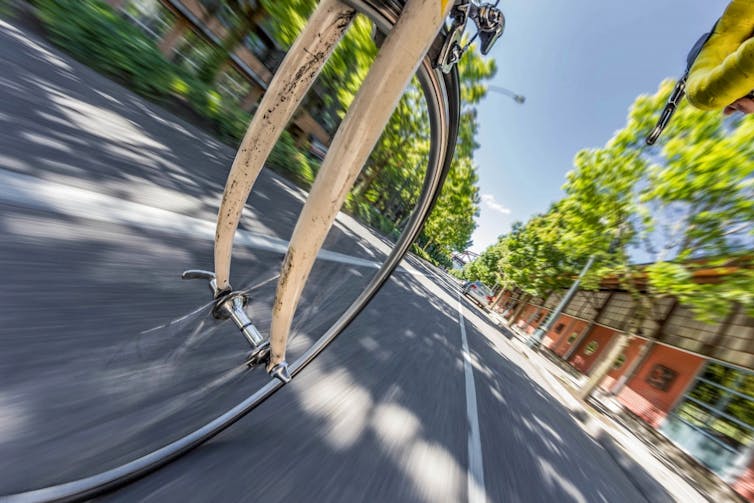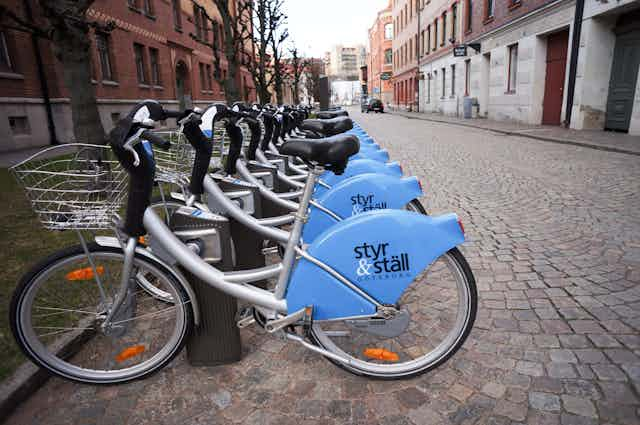As urbanisation and modernisation reach unprecedented levels, road congestion has become a modern day menace. Heavy traffic is associated with air pollution, safety risks, and losses in terms of accessibility, economic competitiveness, sustainable growth and social cohesion. If we are determined to make our cities attractive and sustainable, we must respond to these challenges.
There are a number of measures available to address this problem; either by restricting conventional car use, or providing viable alternatives. None of these solutions is more up-and-coming and marketable right now than the shared use of mobility resources – for example, car sharing. And none of them more environmentally friendly than cycling, which more and more people see as a realistic way of making shorter trips.
Put these two together, and you get bike sharing: an innovation that combines the best qualities of both solutions, while extending the reach and scope of public transport. To be clear, bike sharing refers to rental schemes, whereby civilians can pick up, ride and drop off bicycles at numerous points across the city – usually at automated stations.
The benefits of bike sharing
The benefits of bike sharing schemes include transport flexibility, reductions to vehicle emissions, health benefits, reduced congestion and fuel consumption, and financial savings for individuals.
But the most special quality of public bicycles is the idea of sharing. By sharing with others through a publicly available scheme, individuals can use bicycles on an “as-needed” basis, without the costs and responsibilities associated with ownership. In doing so, these schemes allow people who may not otherwise use bicycles, to enjoy the benefits of cycling; whether they’re tourists or locals.

Bike sharing schemes can also act as a door opener for increased bicycle use, by making a strong visual statement that bicycles do belong to a city’s streets. According to my research, commuters using on-road transport can see bike sharing as a powerful on-street “cycling promotion campaign”.
What’s more, other studies report that cycling increased in cities which implemented bike sharing schemes, noting that these results reflect the combined impact of improvements to cycling facilities, as well as the provision of bike sharing schemes. Some go even further by suggesting that the introduction of bike sharing systems can cause cycling to be seen as a safe and normal mode of transport, in contexts where it’s not common.
Origins
Bike sharing is a concept originating back to the 1960s. However, it was slow to catch on until better technology was developed, which could provide real-time information about the scheme, track the bikes and help safeguard against theft.
Now, bike sharing is booming at an unprecedented rate, largely due to the reasonably low cost of the schemes, and how easy they are to implement compared with other transport infrastructure. And it’s an easy win for governments and urban societies, which can boost their green credentials by embracing such an environmentally friendly design.
In 2004, only 11 cities had adopted bike sharing. Today, more than 1,000 public bicycle schemes of varying sizes and specifications run in more than 50 countries, across five continents.
Europe’s biggest scheme is the Paris Vélib’, with 1,800 stations and more than 20,000 bikes. Hangzhou, China hosts the world’s largest system – three times bigger than Vélib’ – which is set to expand to 175,000 bikes by 2020. Perhaps the most sophisticated scheme is Copenhagen’s Bycyklen, which has a fleet of electric bicycles featuring weather resistant tablets with GPS.

According to recent research into Gothenburg’s Styr & Ställ scheme, if bike sharing is properly promoted, the general population of the city feels that such schemes offer a pro-environmental, inexpensive and healthy mode of transport. In particular, they were seen to complement the city’s public transport services, and give the city a more human-friendly feel.
Getting it right
But research and experience tell us that there can be problems with bike sharing. For example, although the usage rate of these schemes tends to vary globally between three and eight trips per bicycle per day, some facilitate as few as 0.3 trips per bicycle per day.
Apart from under use, schemes can also prove slow to expand, or come up against sluggish and complicated planning procedures. They can create political friction, too, if local authorities are unwilling to forsake street parking spaces for bike stations. Strict cycling regulations can also be a roadblock: in both Melbourne and Brisbane, Australia, compulsory helmets were found to deter many potential riders. Safety concerns and a lack of cycling infrastructure – such as bike lanes – were also found to affect uptake.
Despite these difficulties, bike sharing schemes are, on the whole, a win for everyone. Rebranding something as conventional as urban cycling in a way that embraces the philosophy of shared resource economies and is well accepted by the public, is a timely investment for actively promoting sustainable transportation. Cities that come up with strong and coherent plans will find that recognisable bike sharing schemes can form a powerful and positive part of their image. Meanwhile, civilians of all stripes stand to benefit from clearer roads and cleaner air – whether they cycle or not.

